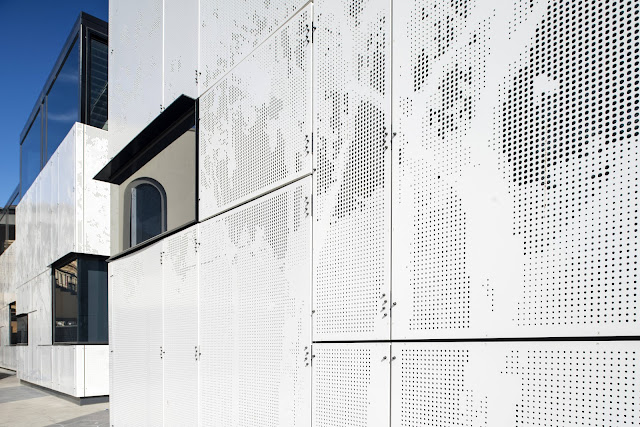Modern Single Skin Metal Building Facades
Facade design enables architects to use the material exclusively based on several factors like its clear aesthetic quality or sustainability attributes. Architects and designers are increasingly searching for products that deliver an unconventional aesthetic without compromising longevity, strength, or sustainable design. Here we discuss what we believe are the three biggest benefits of single skin metals for building.
Sustainability and Cost Efficiency
Sustainability is a broad term that may include the energy of the life cycle, recyclability, or performance of electricity. The single skin metal contains a wide variety of sustainable functionality. If the metal façade is a single skin or a composite of aluminium, it can be recycled in whole or in part. So what's interesting about metal is that it has infinite recyclability or the multiple recycling capabilities.
In addition, single skin metal on a building's exterior provides daylighting and ventilation capabilities, reflecting heat and requiring less energy output. It will allow natural light to enter the interior when used specifically for daylighting without the need for extensive interior lighting during the day. Interestingly, metal façade requires less use of metal panels which enables a variety of benefits including weight reduction and use of materials.
Aesthetics
The intrinsic aesthetic characteristics of facade design are among the most noticeable advantages. Metal façade allows various geometric shapes or holes to be created in a variety of sizes and patterns. The possibilities are infinite; the architects may build a one-of-a-kind exterior depending on the material used. An architect can also provide daylighting, ventilation, protection, and privacy with aesthetics, not many materials give the dual-purpose capacity. One feature of perforated metal is consistency in design, and several facade companies in India give post-painting ability to produce a visually uniform design unchanged by the CNC perforation process.
Durability
There is an intrinsic resilience of each facade design. One of the key benefits of using a metal substratum is its ability to withstand various weathering conditions, obviously depending on what coating or painting method is being used on the product. You will have a reduced material weight with perforation over a solid plate, which is similar to producing properties of the strength-to-weight ratio. Metal building facades provide a lightweight, long-lasting, durable material.
For architects with special aesthetic properties, metal facade is a perfect option. Unlike competing products focused solely on aesthetics, perforated metal provides a wide variety of benefits including recyclability, cost-effectiveness, and longevity. Perforated metal is a strategic façade solution with infinite flexibility surrounding material use, finishing, and facade design choices.
A custom builder does not replicate and does not promote the exact façade of a home you have seen. Nonetheless, if you compile images, brochures, and magazine articles that give a good image of what's desirable to you, along with descriptions of the block on which you want to construct, and send them to the architect, their designer would be able to understand the idea and adapt it to your circumstance. Furthermore, it is almost assured that the construction quality and the overall experience of constructing your home would be much better than what you can find with a volume Builder.
When you look at your home-to-be façade and see one you are in love with, take a snapshot but do not make a decision yet. There are many home facades out there, and the choice of a builder to build your new house has many important considerations. The crucial thing to be mindful of is that the facade companies in India who fit your requirements will also be able to deliver your version of the metal façade you love.




Comments
Post a Comment